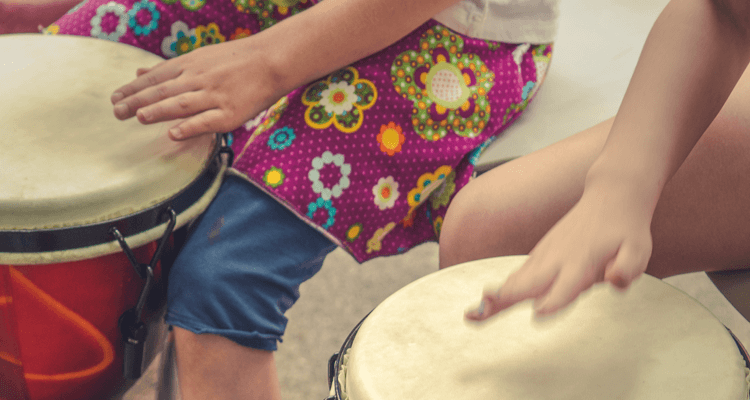Growing up in my family meant Christmas dinners of roast beef and Yorkshire pudding with flaming figgy pudding for dessert, all enjoyed while wearing paper crowns ripped from Christmas crackers. These were not just fun Christmas traditions, they were lessons in my family’s cultural heritage—my mother was born and raised in London, England.
In an effort to assimilate into the American way of life, many families have discarded their cultural customs in favor of new traditions. But learning about other countries and cultures is an important part of a child’s education and where better to start than with one’s own family.
In fact, researchers at Emory University discovered that kids are emotionally healthier and have a better sense of self if they’ve been taught about their relatives and their family history. “Family stories provide a sense of identity through time, and help children understand who they are in the world,” the researchers reported in their paper titled “Do You Know? The power of family history in adolescent identity and well-being.”
The population of first- and second-generation immigrant children continues to grow in the United States, and it’s important they be taught their families’ heritage in addition to their new country’s traditions. But even if you have to research your own lineage to discover your family’s country of origin, which may go back to many prior generations, it should be part your child’s education.
Here are some ways to teach your children about their own heritage.
1. Start with the Earlier Generations
Grandparents, great-grandparents, aunts, and uncles who are originally from other parts of the world can offer a wealth of information about their native country. Suggest that your children interview these relatives, asking questions about where they grew up, the types of foods they ate, traditions they practiced, games they played, and the holidays they celebrated. Discuss which of these traditions your family might be able to carry on such as celebrating a national holiday.
2. Learn with Food
There are often specific types of foods associated with individual countries. An enjoyable way to learn about another country is to indulge in its most popular dishes. Teach your kids a favorite family recipe and you’ll make memories that could last a lifetime. Plus, cooking with your kids can be an unexpected learning opportunity. Or visit a restaurant that serves the types of food indigenous in the country that is part of your family’s history. As your kids enjoy the food, provide instruction on how it is prepared and eaten and, perhaps, some history on the origin of the meal.
3. Visit Cultural Festivals and Museum Exhibits
Many cities and towns in the U.S. hold cultural events celebrating a particular country or region, often around specific holidays such as Cinco de Mayo, Chinese New Year, and St. Patrick’s Day. These events offer an ideal way for kids to learn about a particular culture as they dance to the music, sample the food, and see native costumes on display. Many amusement parks and museums will feature cultural exhibits throughout the year, offering fun educational opportunities to learn about another country’s culture.
4. Incorporate Traditions
Whether you have first-hand information about your family’s cultural heritage or must go back to former generations, you can still incorporate some popular traditions for your family today. Research your family’s cultural roots and discover what practices might fit with your family’s lifestyle. It could be celebrating the country’s most popular holiday or incorporating customs into holidays that you already celebrate. Or choose one day to immerse your family into your chosen culture, serving the appropriate meals, speaking in that language (if appropriate and possible), and watching movies from that country.
5. Educate with Books and Movies
Many books are available to teach kids about other countries. Read to your younger kids from books with characters from the country of your family’s heritage and encourage your teenagers to choose books that describe the country’s culture and history. Have a family movie night featuring a movie that takes place in that country, and then discuss the differences and similarities when compared to your hometown.
6. Learn the Language
Parents who have emigrated from other countries are likely already teaching their kids their native language. But kids in later generations may not learn the language of their relatives. And that would be a loss as there are many benefits of learning other languages. If you have nearby relatives in your family who speak another language, take advantage of their linguistic skills, perhaps to complement a language class your child is taking in school.
7. Explore Your Family Tree
Not sure what your family’s origins are? Visit ancestry.com or a similar site to discover your own family tree. Even if you must go back many generations to learn what countries your family came from before arriving in the United States, it will be fun and educational to learn the cultures and histories of those nations.
If you are looking for more inspiration to dig into your family’s heritage, you might tune into PBS’s episodes of Finding Your Roots, in which Professor Henry Louis Gates, Jr. helps celebrities and others discover their hidden family histories.
Learning about their family’s heritage can provide kids with an important connection to their own identities and open up a new world into other cultures and traditions. Don’t let your family’s heritage slip away without teaching it to your children.
This post originally published in October 2014 and has been updated and republished.




































